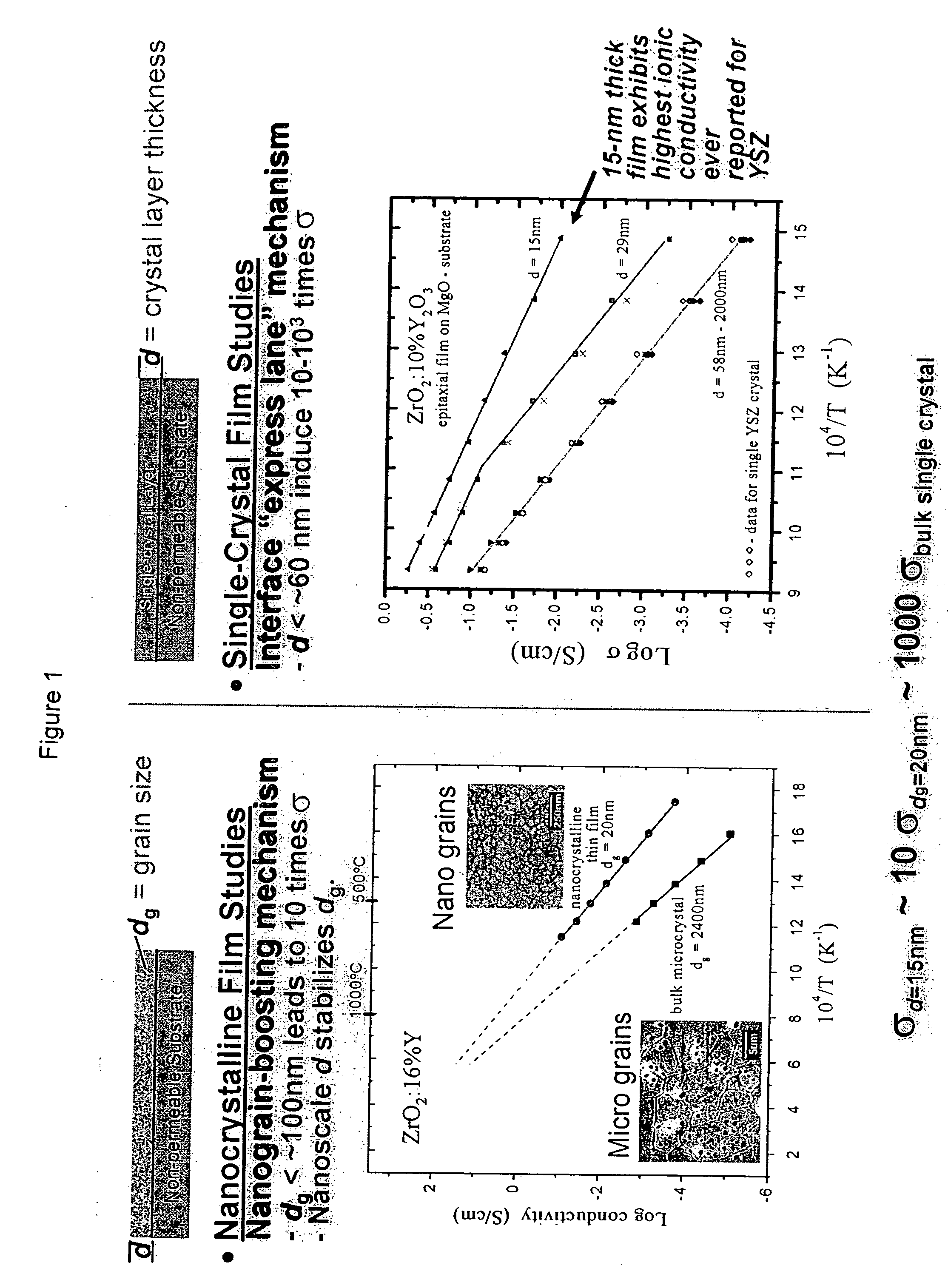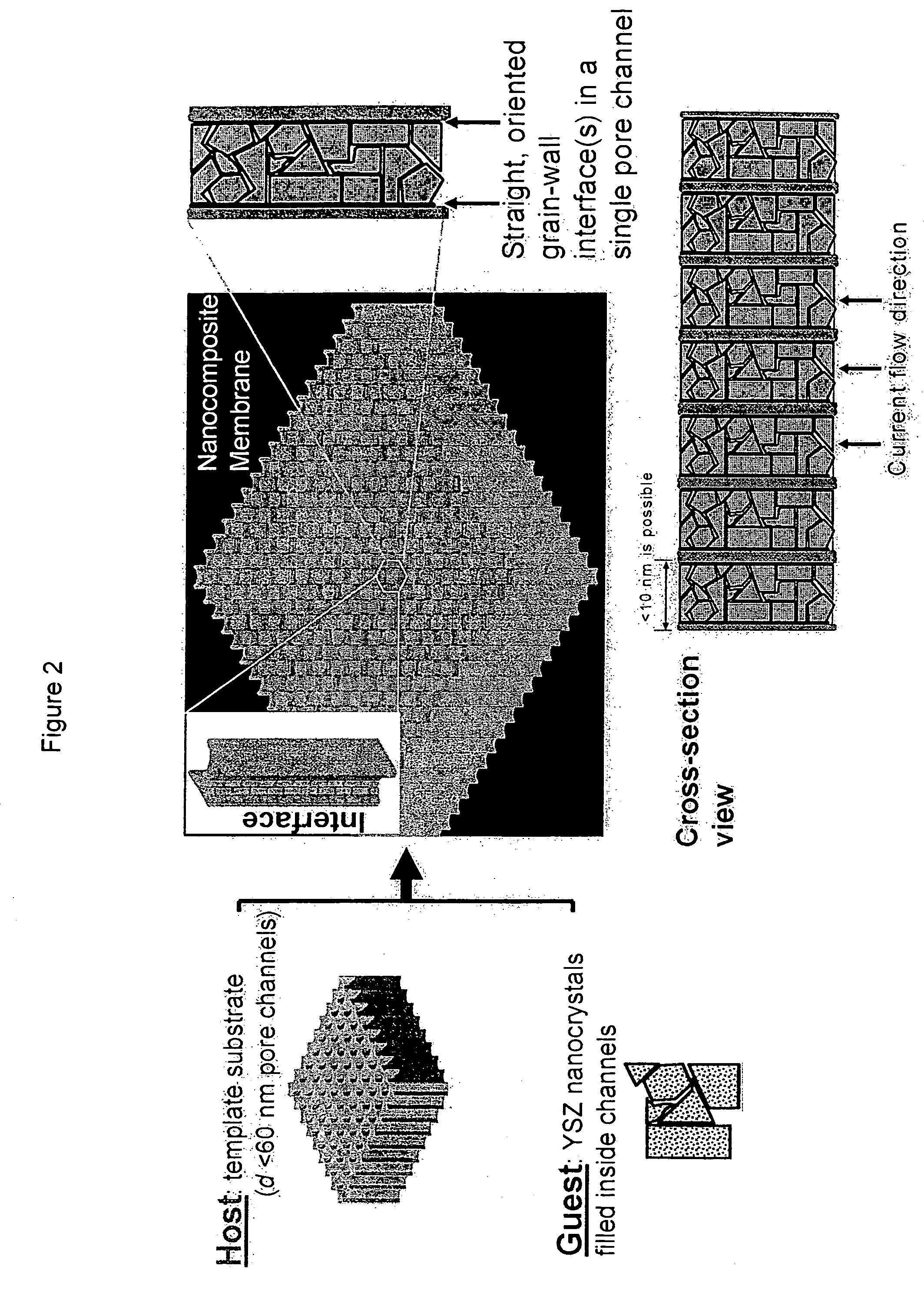Design and synthesis of guest-host nanostructures to enhance ionic conductivity across nanocomposite membranes
a nanocomposite membrane and nanostructure technology, applied in the field of ion conducting membranes, can solve the problems of high system cost, limited wide-spread commercialization of solid oxide fuel cells, and limited ionic conductivity enhancement of guest-host nanostructures, and achieve high conductivity and ionic conductivity. high
- Summary
- Abstract
- Description
- Claims
- Application Information
AI Technical Summary
Benefits of technology
Problems solved by technology
Method used
Image
Examples
Embodiment Construction
[0022] As mentioned above, ionic conductivity in solid electrolytes can be improved by dissolving appropriate impurities / dopants into the structure or by introducing interfaces (such as grain boundaries) that cause the redistribution of ions in the space-charge regions. However, doping has its limitations in enhancing conductivity. It has been discovered that for ionic conducting oxides, it is important to apply grain-boundary engineering and tailored control of nanostructures as strategies to enhance their ionic conductivity across / through a membrane.
[0023] Studies of the electrical properties of single-layer yttrium-stabilized zirconia (YSZ) thin films deposited on a magnesium oxide substrate are shown in FIG. 1 which demonstrates that it is possible to greatly enhance conductivity by nanoscale control. Nanocrystalline film studies show a nanograin conductivity boosting mechanism. When the grain size (dg) g). This may be called a “grain boundary effect” conductivity enhancement m...
PUM
 Login to View More
Login to View More Abstract
Description
Claims
Application Information
 Login to View More
Login to View More - R&D
- Intellectual Property
- Life Sciences
- Materials
- Tech Scout
- Unparalleled Data Quality
- Higher Quality Content
- 60% Fewer Hallucinations
Browse by: Latest US Patents, China's latest patents, Technical Efficacy Thesaurus, Application Domain, Technology Topic, Popular Technical Reports.
© 2025 PatSnap. All rights reserved.Legal|Privacy policy|Modern Slavery Act Transparency Statement|Sitemap|About US| Contact US: help@patsnap.com



